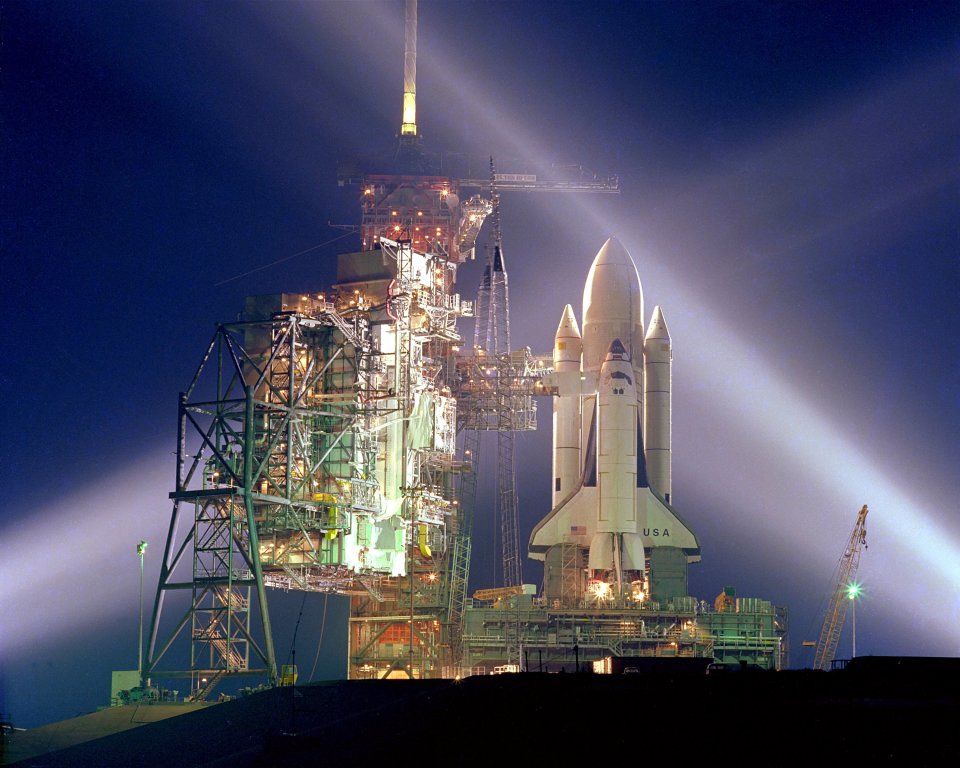

|
Your Most Trusted Source of Foreign
News and Views About the United States
|


By Constanze Krakau
Translated By Hartmut Lau
July 21, 2005

The problem that has kept the space shuttle
Discovery bound firmly to earth for the last few days has been solved and
America’s space flight agency (NASA) is determined to launch on July 28th
-- perhaps even with only three of the usual four external fuel tank sensors.
We shouldn’t be astonished at NASA’s grim determination. There is more than
the maintenance of the International Space Station (ISS) and of NASA’s reputation
at stake. The success or failure of this shuttle flight, the first since Columbia’s fatal accident in February 2003, will influence
expert opinion on the future of manned space flight.
SEE ALSO: Russians Fret That U.S. Endangers Manned Space Flight, From Russia's
Novisti Newspaper, July 20
The debate about whether or not manned
space travel makes sense was spurred on in the fall of 2004 when the American
president addressed the subject during his reelection campaign, and he described
his dream of sending astronauts to the moon in 2020 and to Mars by 2030. The
European Space Agency (ESA) was inspired and announced that it also wanted
to undertake manned space flight. In

Basically, the arguments are as follows: manned space flight’s costs and risks are too high. Bob Park, a physics professor and space flight expert at the University of Maryland, is a vehement critic. He points out the unpleasant side effects on the astronauts’ health, the least harmful of which include digestion problems. Naturally, such problems don’t bother robots very much. Park’s main argument is that the radiation levels to which astronauts are exposed -- many times the maximum levels considered safe here on Earth -- pose an unacceptable risk.
The German Physics Association adds that, since robotics has made such great advances in the last few decades, the presence of humans in space now appears to be unnecessary, and scientific or economic gains that would justify the high costs of manned space flight have yet to be found. For example, robots are much better suited for experiments in weightlessness. In addition, the very much higher costs generated by keeping the people on board safe are an argument for unmanned space fight.
Ulrich Walter, a professor of space flight technology at the Technical University of Munich and a veteran of a 1993 space flight on board the space shuttle Columbia, rejects the costs argument. The 1992 Eureka Project, a free floating unmanned platform for experiments in space, was, at €412 million per experiment, five times as expensive as a comparable manned mission. However, it would be very difficult to calculate the costs of a settlement on the moon or on Mars.

In contrast, the safety problem is most difficult. Although every technical thing that one can imagine to make the shuttles safe has been done in NASA’s research centers, the Discovery incident shows that there is really no such thing as a routine space launch, notwithstanding more than 110 successful launches and highly detailed control procedures. The horror that kept people glued to their TV screens in 1986 when the shuttle Challenger exploded 73 seconds after take-off and was, sadly, repeated during Columbia’s fateful 2003 landing attempt, would certainly have been much less intense had the crew been made up of robots. Only the engineers would have mourned. There’s always some level of risk.
There is one indisputable advantage humans have over robots. When the picture of the first man on the moon was broadcast around the world, many could identify with it. Whether a planet is explored by telescopes, robots or humans make a huge difference. People are interested in people. And thus the day that the first human sets foot on another planet will draw much, much more worldwide attention than will the results of any scientific experiments.
* Translator’s note: SPD is the abbreviation for the Socialist Party of Germany, currently in coalition with the Green Party to form the German government.